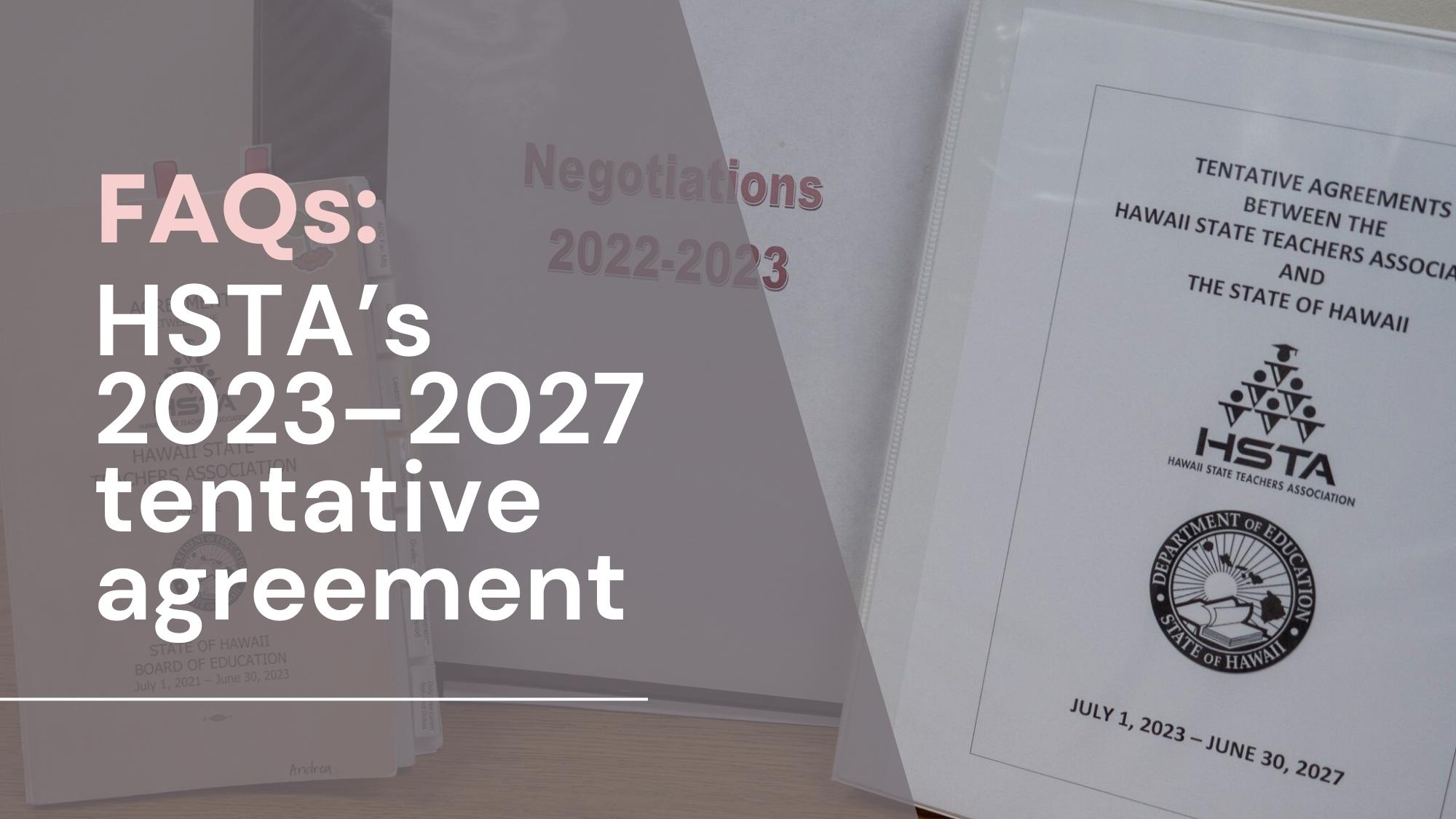Questions and answers addressing ratification vote, salary, EUTF, 21 hours, and more
Updated: May 26, 2023
The following frequently asked questions supplement the information shared Sunday, April 16, regarding the Hawaiʻi State Teachers Association’s tentative settlement late Friday with the State of Hawaiʻi and the Board of Education for a new four-year contract from July 1, 2023, through June 30, 2027.
Ratification vote
We would have to go back to the table with the employer to try to negotiate with no guarantees that what is currently being offered would remain on the table. It would also mean that we will miss the final decking at the State Legislature of fiscal bills on April 28, 2023, and any negotiated increases in compensation (salary and health premiums) would have to wait for the 2024 legislative session to approve funding, likely pushing back raises and other improvements until July of 2024.
In the case of health premiums, no agreement would mean employees will take on the burden of any increase in premiums. The employer would continue to pay the current health premium dollar amount it pays without the boost in payments in the tentative agreement. At current enrollment rates, HSTA calculates that the employer will shoulder the load for more than 95% of the additional healthcare premium costs for the next coverage year, which is worth more than $7.5 million. Without an agreement, the entire additional cost would fall to our members.
Salary
Initially, the employer rejected both our proposal for a new salary construct and efforts to create a Class VIII. The rejection was based on the unknown cost and concerns that teachers would have no incentive to continue to pursue new coursework in the future. Then, after much back and forth, the employer was initially only willing to agree to a Class VIII by earning 30 credits and with other significant restrictions. While we tried very hard to negotiate a Class VIII without restrictions, the employer was firm: under no circumstances would they agree to allow teachers to use banked credits.
In the final settlement, we were able to move the employer back to the 15 credits. However, they wanted teachers to pursue new professional development, and to incentivize teachers to obtain their sheltered instruction qualification (SIQ). The team worked toward the best possible solution for teachers given the restrictions set firm by the employer. While not perfect, they felt the 15 credits with some restrictions is a better option than having no Class VIII at all, as two-thirds of the bargaining unit are not at Class VII just yet. Note: The Class VIII restrictions do not affect reclassification rules for other classes, and by the third year of the contract, teachers will have earned six new credits via 21 hours of job-embedded PD. If teachers have already earned their six SIQ credits (and have not already used them for reclassification), they will only have to earn three additional credits to qualify for reclassification to Class VIII in 2025.
Employer Union Health Fund (EUTF)
The newly negotiated employer contributions change all previously reported EUTF information on the employer/employee cost split. Please be sure you are referencing the documents that HSTA released April 16 and thereafter.

